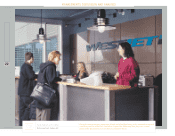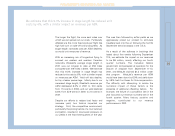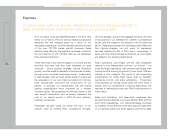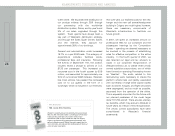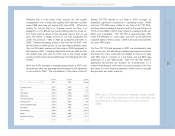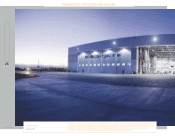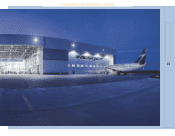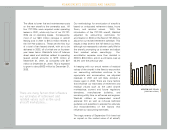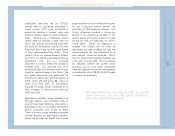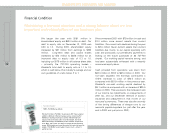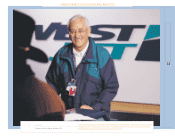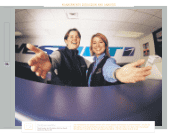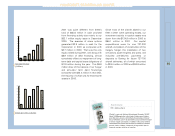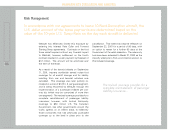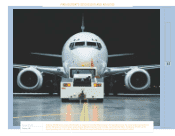Westjet 2001 Annual Report Download - page 33
Download and view the complete annual report
Please find page 33 of the 2001 Westjet annual report below. You can navigate through the pages in the report by either clicking on the pages listed below, or by using the keyword search tool below to find specific information within the annual report.
31
particularly older jets like our 737-200
aircraft, and our appraisals conducted in
fourth quarter 2001 have confirmed a
substantial decline in market value and
potential residual values at future retirement
dates. Write-downs of WestJet’s capital
assets were not required in 2001 over and
above the already conservative estimates
we used for amortization during the year.
The major test of the value of these assets
is their revenue-generating ability. Their
value to us on our balance sheet is evident
as none of our aircraft were parked following
September 11th, and our business
recovered to normal levels very quickly in
October 2001. Our approach now is to
continue to take a conservative view of very
uncertain residual values in the future. We
will again accelerate our estimates for
amortization beginning in the first quarter of
2002, which will add about $8 million to
what would have been our amortization
expense for 2002, which translates to an
18% increase in amortization’s cost per
ASM over 2001.
WestJet’s profitability means taxability, and
although federal and provincial rates of
taxation have been declining, this cost is a
significant portion of our pre-tax earnings at
36.2% compared with 42.6% in 2000.
There is a major timing difference between
income reported for accounting purposes,
where we amortize our aircraft over a much
longer timeframe, as compared with income
for tax purposes where aircraft are
amortized at 25% declining balance. This
timing difference creates a future tax
liability, or an accounting provision in the
current period at the then current tax rates
for the tax that will eventually be paid in
future years. When tax legislation is
enacted that lowers the tax rate, an
adjustment is made to reflect not only the
current period’s tax, but retroactive to all
prior periods’ future tax liabilities. This is
why, for accounting purposes, WestJet has
a low rate of tax for 2001. Not only did the
tax reduction benefit the current year’s
provision, but our prior years’ allowances
were also adjusted downward. We expect a
normalized tax rate of 38.5% for 2002 based
on current tax legislation.
Not only did the tax reduction benefit the current
year’s provision, but our prior years’ allowances
were also adjusted downward.
MANAGEMENT’S DISCUSSION AND ANALYSIS



